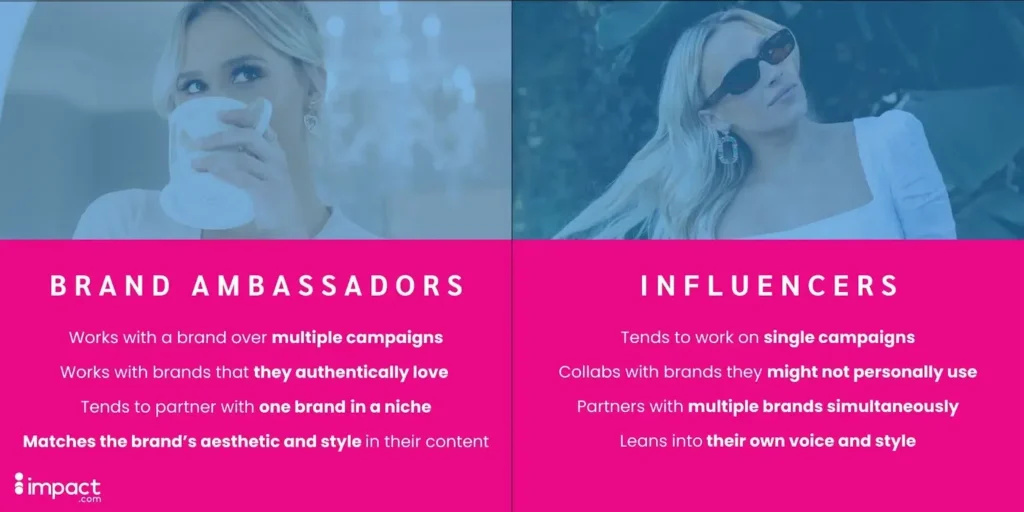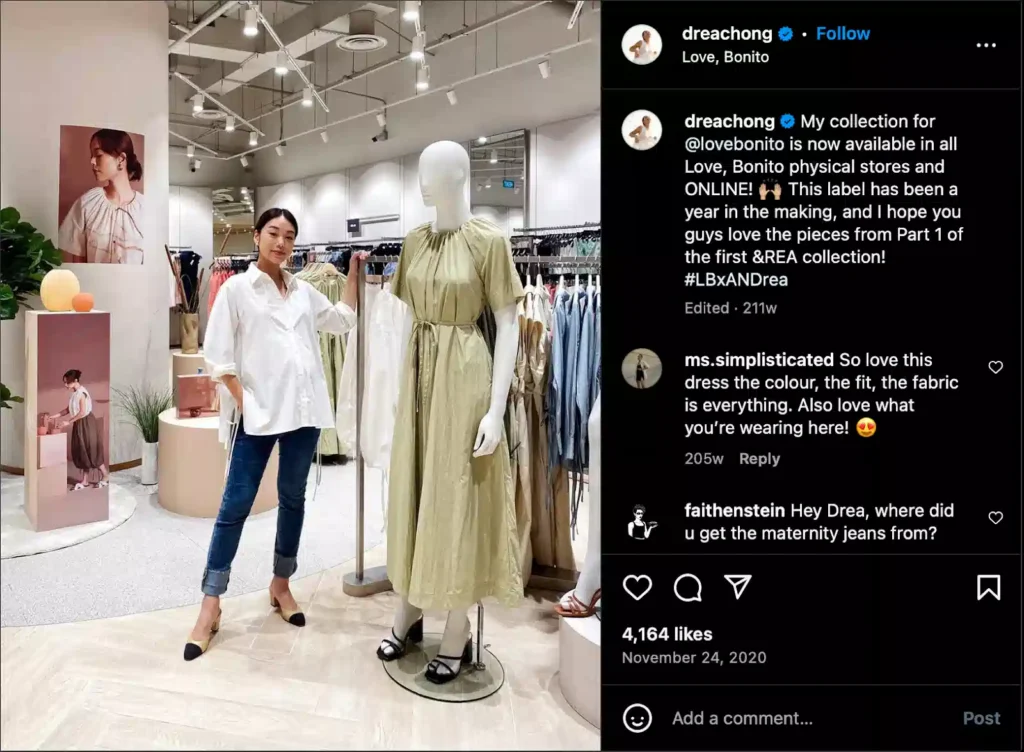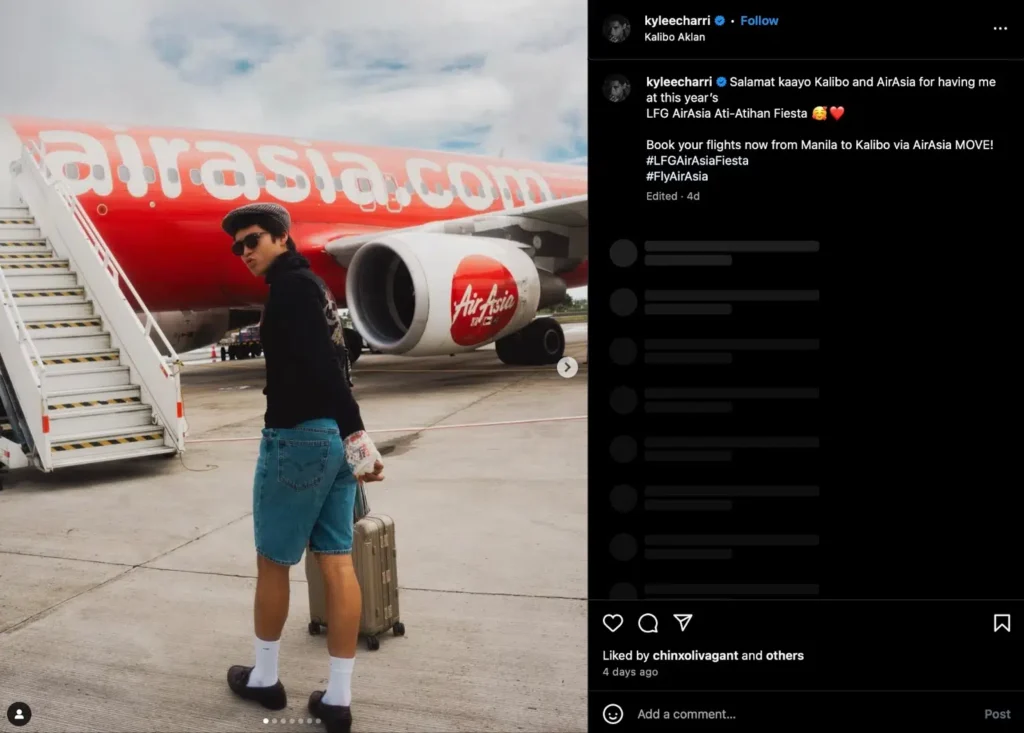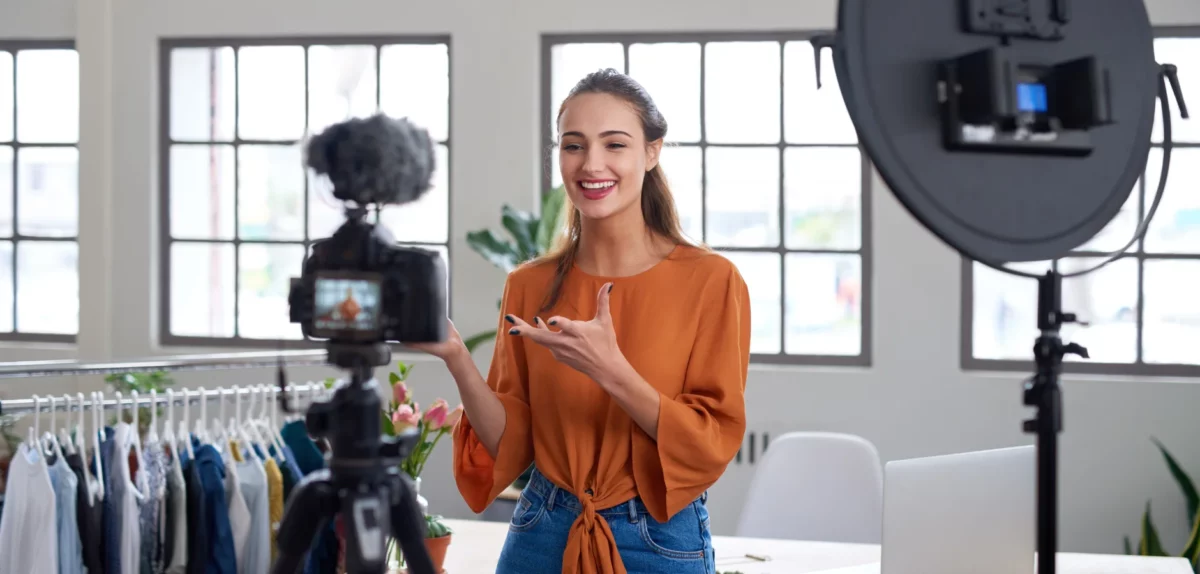In Southeast Asia, brand ambassador programs transform how companies reach and convert customers. With regional social commerce projected to hit $125 billion by 2027, now is the critical time to launch or scale your program.
Here’s what successful brands in SEA already know:
- 83 percent of Singapore consumers rely on recommendations for purchase decisions
- Only 4 percent trust traditional advertising
- User-generated content and influencer partnerships drive significantly higher engagement than traditional marketing
This complete guide shows you how to build and scale a brand ambassador program in Southeast Asia, with proven strategies from successful regional brands like Love, Bonito and AirAsia. You’ll learn:
- How to recruit and manage the right ambassadors for your brand
- Step-by-step process for launching your program
- Proven tactics to scale across multiple markets
- Ways to measure and optimize performance
Whether you’re just starting out or looking to expand an existing program, these strategies will help you tap into Southeast Asia’s thriving social commerce ecosystem.
Brand ambassador success: converting customers at every stage
Brand ambassador programs create a simple value exchange: your brand provides rewards (like discounts, commissions, or gifts), and ambassadors promote your products through authentic recommendations to their audience.
Setting up your program: A successful ambassador program starts with a clear structure. You’ll need to establish your incentive system upfront, outlining exactly what rewards ambassadors can earn for their contributions. This foundation supports both self-directed sign-ups through your website and direct outreach to creators who match your brand values.
The key to long-term success lies in comprehensive onboarding. Provide your ambassadors with thorough product training, easy-to-use promotional materials, and regular opportunities for feedback. This investment in their success ensures they have everything needed to represent your brand effectively.
Tracking success: Once launched, each ambassador receives unique referral links to share with their audience. This tracking system lets you monitor every click and purchase, measure individual ambassador performance, and optimize your reward structure based on real results.
These referral and ambassador programs are massively popular. Around 55 percent of people surveyed by impact.com in Singapore participate in at least one of these programs. These referrals make a real difference: over 80 percent of respondents to a new SEA eCommerce survey have bought products because of a content creator’s recommendation.
On top of boosting sales, talented ambassadors can play crucial roles across the whole sales funnel. These referral partners help brands solve a wide range of challenges:
- Reaching new markets? Ambassadors with established audience trust can make the perfect introduction to their followers.
- Convincing shoppers on the fence? UGC creators make thorough hands-on demos and reviews to showcase your products in the real world.
- Closing the sale? Ambassadors can share discount codes and promote deals to help prospective customers cross the finish line.
Rather than relegating them to a specific part of your marketing strategy, take an open approach to your ambassador program. These authentic ambassadors are the perfect partners, regardless of your brand goals. Plus, your referral rewards create an active feedback loop to keep customers returning and spreading the word.
Understanding the difference between influencers and brand ambassadors
One common question brands ask is whether influencers and brand ambassadors serve the same role. While there’s some overlap, understanding the key differences will help you choose the right partnership strategy for your goals.
Influencer partnerships
Think of influencers as campaign specialists. They typically partner with brands for specific, time-bound promotions where they apply their unique voice and style to showcase your products. These collaborations usually operate under fixed contracts with clear deliverables and timelines.
Brand ambassador relationships
Brand ambassadors, on the other hand, build deeper, ongoing relationships with your brand. Many start as satisfied customers or genuine fans who already love your products. Their authentic connection to your brand translates into consistent, long-term advocacy that extends beyond individual campaigns.
The value of both
Some influencers may evolve into brand ambassadors over time, while others prefer focused campaign work. Both relationships offer distinct advantages: influencers can create immediate impact for specific initiatives, while ambassadors provide sustained advocacy and authentic storytelling over time.

How to avoid common challenges in your brand ambassador program
Ambassador programs also have their challenges. Rather than relying on trial and error to improve your program, check out these common pitfalls—and how to avoid them:
1. Overcomplicating the process
Ambassador programs need to be straightforward to use. If people need help understanding your complex reward tiers or the steps for using tracking links, take a step back and reevaluate. Ask your current ambassadors for feedback on the process.
2. Undervaluing your ambassadors
Streamline your rewards to inspire more recommendations and engagement. Lean into stronger product training and education so ambassadors feel equipped to answer questions from their audience and confidently endorse your brand. According to impact.com’s referral report in Singapore, higher rewards and strong program education are crucial for improving your ambassador program.
3. Making the referrals uncomfortable
Not everyone shifts easily from customer to ambassador. So, you want to make your customers feel great about recommending your brand to their friends, family, and followers. In fact, the referral report noted 32 percent of shoppers feel uncomfortable recommending a product just to receive a reward.
Shared incentives are the best way to sidestep this issue and empower your customers to become top-tier ambassadors. A notable 68 percent of referrers prefer when both parties receive a reward from brands. For example, try giving out discounts to new customers, as well as rewards for ambassadors. These mutual rewards can ease people’s concerns and boost ongoing participation in general. This way, everybody wins (including you).
8 steps for launching a successful ambassador program
A successful program requires thorough planning and the right tools to make it possible. Brands need to balance keeping current ambassadors happy and encouraging more to join. This takes planning, resources, and the right tools. Here are eight ways to set your team up for success:
1. Look for creators with a strong personal brand (that fits with yours)
Authenticity drives results in Southeast Asia’s social commerce landscape. When selecting ambassadors, look beyond follower counts to find partners who naturally align with your brand in three key areas:
- Brand values and mission
- Communication style
- Target audience interests
Case Study: Love, Bonito’s value-driven partnerships
Love, Bonito, a leading Southeast Asian fashion brand, demonstrates this approach effectively:
Core Brand Value: Women’s empowerment and self-expression Ambassador Strategy: Partners with creators who:
- Naturally embody these values in their content
- Share authentic stories of personal growth
- Connect with audiences through genuine lifestyle content
Result: Their promotions resonate as natural extensions of both the brand and the ambassador’s existing content, driving stronger audience engagement and trust.

Andrea Chong and Love, Bonito collaborated on an entire fashion collection.

Melissa Celestine Koh teamed up with Love, Bonito with product highlights and a unique discount code.
Also, consider your target audience and what platform they’re on. According to the recent eCommerce Report: YouTube, Facebook, and TikTok are the most popular platforms across Southeast Asia. Over 88 percent of respondents use YouTube—followed closely by Facebook at 84 percent.
2. Find people growing their audience authentically
Reach out to honest, genuine influencers and UGC creators with great relationships with their audience. Besides their follower and view count, consider their engagement metrics: the number of high-quality comments and direct audience interactions.
Also, look for partners who represent other brands well and take responsibility for their mistakes. These are the ideal partners to raise your brand’s name recognition and authority among customers.
3. Check on other ambassador programs in your industry
Thankfully, you don’t have to build your program in a vacuum. Have your competitors got ambassador programs? If so, you can compare rewards and tier structures, especially since many brands have public ambassador programs.
Are subscriptions part of your business model? More than 80 percent of SEA consumers use online subscription services, and influencers are currently playing a key role in driving awareness and sign-ups. So, see how similar brands capitalize on this growth and apply that to your program.
4. Maximize your program’s budget with the right ambassador tools
Skip the manual processes and accelerate your program launch with purpose-built ambassador management software. The impact.com platform provides everything you need:
- A centralized dashboard for tracking live performance metrics
- Streamlined tools for discovering and recruiting ambassadors
- Automated contracting and payment systems
- Easy-to-share referral links and promotional content
- Built-in gamification features to drive engagement
Plus, with enterprise-grade security protecting your data—a top priority for 79 percent of Singapore referrers—you can focus on growing your program with confidence.
5. Keep the application process simple
Research shows a key challenge: nearly one-third of potential ambassadors struggle to find programs to join. Here’s how to ensure your program stands out and attracts participants:
Make your program visible through:
- Strategic placement on your website
- Post-purchase follow-up emails
- Customer account dashboards
- Social media announcements
- Clear benefits communication
Keep the sign-up process simple and emphasize mutual rewards—when both ambassadors and their referrals benefit, participation increases. The easier your program is to find and understand, the more likely it is to attract quality ambassadors.
6. Personalize your rewards with unique offers and tiers
Let data guide your rewards strategy. Research reveals clear preferences among brand ambassadors:
Top ambassador reward preferences:
- Cash rewards: 54 percent
- Product discounts: 43 percent
- Free products: 40 percent
For cash incentives, structure matters. While 56 percent of ambassadors prefer flat commissions, 39 percent favor progressive rates that increase with performance. Consider enhancing your program with experiential rewards for top performers, such as exclusive events and behind-the-scenes access.
7. Share top content on your accounts and grow your content backlog
Smart brands know that great ambassador content deserves more than a single use. Transform one-time posts into lasting marketing assets by:
- Republishing reviews and demos on your brand channels
- Integrating UGC into your advertising campaigns
- Building a content library for ongoing marketing initiatives
AirAsia: A Southeast Asian success story
AirAsia demonstrates the power of strategic content repurposing through their comprehensive UGC program:
Strategy elements:
- Multi-platform presence across Instagram, Twitter, and Facebook
- Branded hashtags (#AirAsia, #FlyAirAsia) for easy content discovery
- Integration of user content into official marketing
- Contest-driven engagement offering flight discounts and rewards
- Showcase of diverse Southeast Asian destinations through authentic traveler content
Results:
AirAsia has built a self-sustaining content ecosystem where traveler stories drive both brand awareness and booking decisions. Their approach creates a continuous cycle: user content drives engagement, which inspires more travelers to share their experiences.
What this tells us:
By treating ambassador content as a renewable resource, not a one-time asset, you create a sustainable marketing engine that grows stronger with each piece of content.

Actor, singer, and influencer Kyle Echarri uses #FlyAirAsia to highlight the airline to his massive audience.
8. Use live data to refine and improve your ambassador program
While your KPIs will vary based on specific brand goals, successful programs balance quantitative metrics with qualitative feedback. Here’s how to optimize both:
Performance tracking: Monitor key metrics through the impact.com platform to understand the hard numbers behind your program’s success:
- Referral conversion rates
- Ambassador engagement levels
- Revenue generated per ambassador
- Customer acquisition costs
Ambassador feedback: Regular check-ins with your ambassadors provide crucial insights about:
- Process improvements needed
- Resource gaps to address
- Reward preferences
- Program satisfaction levels
By combining performance data with ambassador input, you can make informed decisions to strengthen your program and keep partners actively engaged.
FAQs
By rewarding people for recommending your products, you create a positive feedback loop that can increase your sales, name recognition, and brand loyalty. You’ll also develop a strong marketing channel that isn’t reliant on the traditional advertising model.
Some influencers act as brand ambassadors, but the roles aren’t always the same. Typically, influencers lean into their own voice and style for a short-term brand collaboration. Most brand ambassadors work with brands they love, usually sticking around for multiple campaigns.
Nowadays, shoppers trust ads less and are more discerning about fake product promotions. So, the best brand ambassadors are content creators and customers sharing recommendations for products they genuinely care about. That’s what wins over new customers.
Converting customers to be your best brand advocates
With consumer trust in ads at a low point, ambassador programs are a top-tier option for creating a positive marketing feedback loop. By rewarding shoppers for recommending your products, you’ll increase repeat business and grow your customer base at the same time. Especially with mutual rewards and discounts for both parties, everybody is incentivized and invested in your brand’s success.
With impact.com’s easy-to-use platform, you can launch an ambassador program that works simultaneously for long-time partners and new customers. So, what are you waiting for?
Check out these resources for more influencer and brand ambassador insights:




